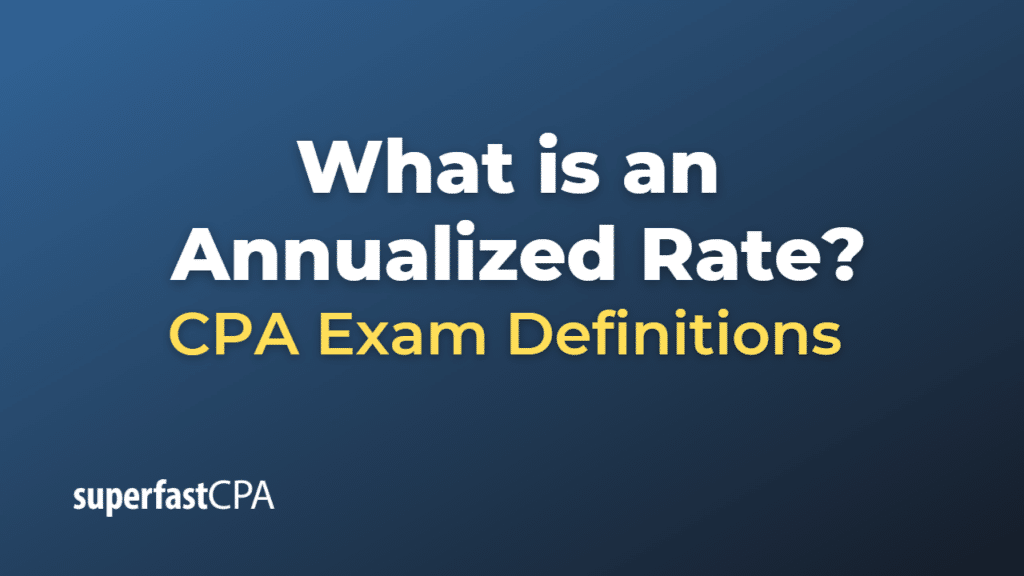Annualized Rate
An annualized rate is a financial metric that expresses a value or rate over a period shorter than one year, converted into an equivalent annual rate. This allows for easier comparisons between investments, financial performance, or other economic data that might span different periods. The annualized rate assumes that the growth, interest, or return remains constant throughout the year and compounds over the specified period.
To calculate the annualized rate, you extrapolate the current rate or value for a full 12-month period, assuming a constant rate of growth or return. It is commonly used to compare the performance of investments or economic data reported on a monthly, quarterly, or semi-annual basis.
Example of an Annualized Rate
Suppose you have invested $10,000 in a savings account that pays 1% interest every quarter. To find the annualized rate, you need to account for the compounding effect of the interest paid each quarter:
- Calculate the quarterly growth factor: 1 + 0.01 = 1.01
- Raise the growth factor to the power of the number of quarters in a year (4): 1.01^4 = 1.04060401
- Subtract 1 from the result: 1.04060401 – 1 = 0.04060401
- Convert the result to a percentage: 0.04060401 * 100 = 4.06%
The annualized interest rate for this savings account is approximately 4.06%, taking into account the compounding effect of the quarterly interest payments. Keep in mind that annualized rates are based on the assumption of a constant rate, which may not always be accurate in real-world situations.













